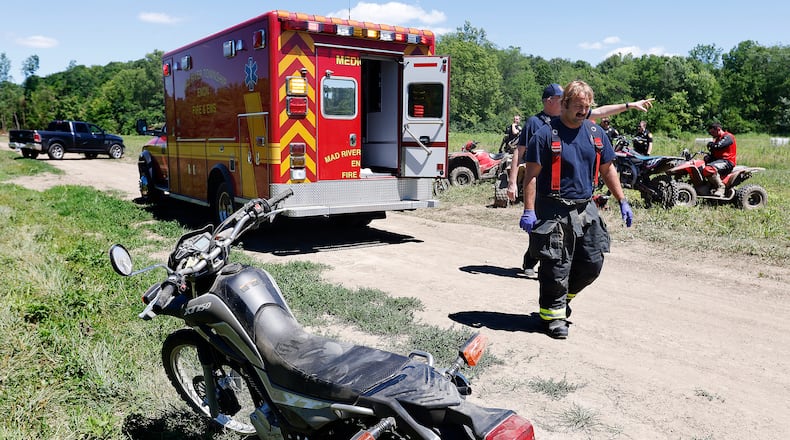Springfield and Clark County have both had traffic crashes involving ATVs that were driven on public roadways.
Late last month, two community members died in a fatal ATV crash on Ballentine Pike in Springfield after their ATV sideswiped another ATV, lost control and went off the left side of the roadway, hitting a fence and overturning.
On Sept. 9, a 2-year-old was flown to a hospital after being struck by an ATV while crossing a Springfield Twp. street.
Ohio State Highway Patrol Sgt. J-Vonne Humphreys said while the Springfield post does not see too many ATVs drive on the roadway where they patrol, some common violations of which he is aware are the vehicles being unregistered, ATV drivers following other vehicles too closely and failure to yield. Failure to yield is a common violation that results in injury crashes in several types of vehicles.
Humphreys said it’s important to operate ATVs at posted speed limits and make sure they are functioning properly with working headlights and taillights. He said those driving ATVs should wear safety equipment like helmets.
“If you get hit, you’re probably not going to be in the vehicle; you’re going to be falling off the vehicle, and people get head injuries and everything that comes with that,” Humphreys said.
According to the U.S. Consumer Product Safety Commission, 94,700 injuries associated with off-highway vehicles were treated in U.S. hospital emergency departments in 2022. ATVs were involved in 92% of off-highway vehicle injuries over five years.
Off-highway vehicle drivers run the risk of overturning, collisions and being ejected, according to the Consumer Product Safety Commission. The safety commission advises getting training from a qualified instructor before operating this kind of vehicle, only riding with as many passengers as there are seats, staying off paved roads except to cross where allowed, avoiding alcohol consumption, riding age-appropriate models and always wearing safety gear.
Safety guidelines are “pretty much” universal and common violations are in line with those of motor vehicles, Humphreys said.
“Make sure you pay attention out there; make sure you stay safe regardless of what you are operating, but if it’s on something where you can get knocked off of it, make sure you’re wearing the proper riding equipment and make sure things are registered and equipment is functioning,” Humphreys said.
About the Author

